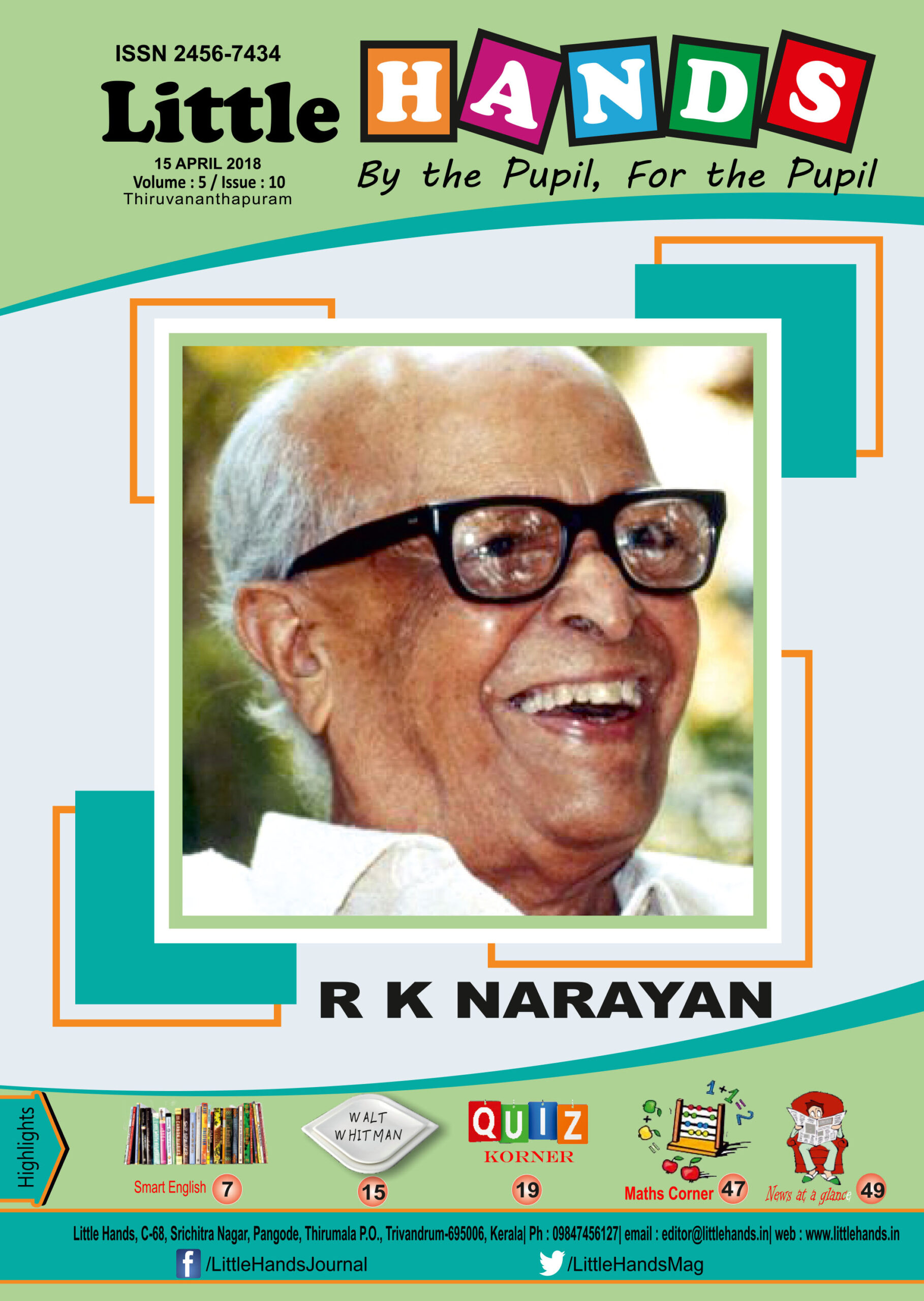India has a rich heritage of story-telling. The ‘Panchathanthram’, fables and Jataka tales are very popular. We should add the innumerable stories from the Puranas and classics to the list.
The spread of English has added to the popularity of our age-old stories. Meanwhile, new writers appeared adding to their public approval and appreciation. Among the various writers in Indian languages, Munshi PremChand pictured the ups and downs of the common folk and was loved by the readers both in Hindi /Urudu and other versions.
Among the 20th century writers there is none to outshine R.K. Narayan in popularity. As a matter of fact, it was he who made India accessible to foreign countries. He gave “foreigners” a window to peep into Indian culure and sensibilities. His simple and modest style has often been compared to that of the illustrious American author, William Faulkner.
Born in a humble South Indian family, Narayan decided to stay at home and continue writing. He could have gone for further studies after his graduation. But he did not want himself to tax his family and its humble surroundings. His style and simple ways of approach endeared him to his readers. His father was a school headmaster who was frequently transferred. However, Narayan spent most of his childhood in the loving care of his grandmother, Parvathi. Her soft and sober influence is evident in most of his works.
His next work, ‘Gods, Demons and Others’ was a collection of short stories which were illustrated by R.K.Laxman, his brother, a famous cartoonist and the husband of Kamala Laxman, a dancer of repute. In 1947, he brought out The Vendor of Sweets which was well received. The same year he travelled to England and received a honorary doctorate from the University of Leeds.
Among his major novels are ‘The Guide’ ‘the English Teacher’, ‘Mr.Sampath’, ‘The Financial Man’ and the ‘Dark Room’. Most of these were published in the wideley circulated ‘Illustrted weekly of India. Perhaps the most popular among them is the Days of Malgudi whichs subsequently serialized in T.V. Incidentally, most of his novels were illustrated by R.K.Laxman.
Then followed a Tiger from Malgudi which too was fictional but readers believed it as a real place. The fact is that Malgudi was a semi-urban fictional South Indian town where most of his stories were set. Many readers still believe that there is such a town like Malgudi.
Incidentally, the first novel he wrote was ‘Swami and His Friends’. Significantly it was Graham Greene, renowned author, who was instrumental in getting Swami and His Friends published. In fact, it was Greene who encouraged him to focus on the English speaking audience.
He translated Kamba Ramayanam into English and wrote a volume titled the Emerald Route to promote tourism. Narayan was chosen as a member of Rajya Sabha which he utilised to improve the education system. He was also named as the honorary member of the American Academy of Arts and Letters. The 1980s proved to be a prolific period when several works came out.
Narayan has won several accolades for his contributions. He earned the Sahitya Academi Award in 1958, the Padma Bhushan in 1964, Padmavibhushan in 2001 and a prestigious medal form the British Royal Society of Literature. Quite interestingly, he will be remembered for the invention of Malgudi, a semi-urban fictional village in South India where many of his stories were set.
In 1947, he brought out ‘The Vendor of Swords’ which was well received. The same year he travelled to England and received a honorary doctorate from the University of Leeds.
In 1933 he met his future wife Rajam, a fifteen year old girl and fell deeply in love with her. They had to surmount several astrological and financial hurdles before the marriage materialised. Rajam died of typhoid in 1939 leaving a three-year old daughter. It caused a great shock leaving him depressed for a long period. He never remarried.
Perhaps ‘The Guide’ is the most celebrated of all his works. It was made into a successful film, with Dev Anand and Waheeda Rahman as the lead pair. Interestingly, Pearl s Buck, the renowned writer and Nobel Prize winner, was associated with its production and was in India mingling along with the crew.
Narayan passed away in 2001 at the age of 94 when he was planning to write his next novel, a story of a grandfather. That was not to be, but he left lasting fame and is regarded as one of the three leading Indian writers of fiction along with Raja Rao and Mulk Raj Anand.

